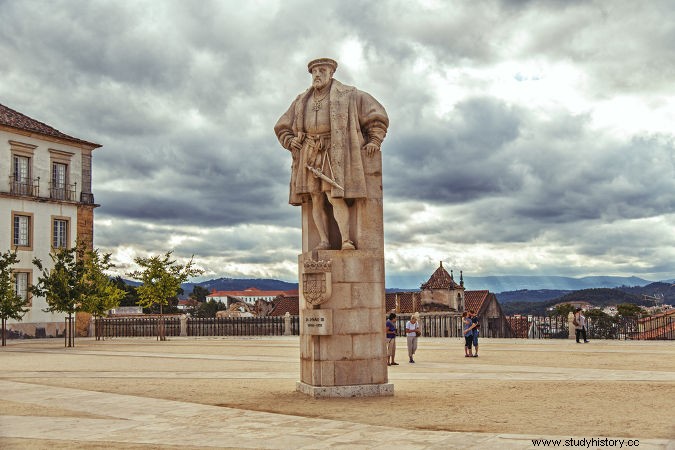
The hereditary captaincies were the first attempt by the Portuguese Crown to organize the occupation and colonization of Brazil. The system was implemented in the 1530s and consisted of giving Portuguese nobles the right to explore a region called the captaincy. However, this system showed major flaws and its administration, concentrated on the grantees, was soon replaced by that of the governor-general.
Background
The exploration of Brazil during the period 1500-1533 was carried out in the scheme of factories installed in regions of the Brazilian coast. They were a kind of trading post where the Portuguese gathered the pau-brasil to be shipped. This was because, in that period, trade with India was economically more profitable for the Crown and for the high nobility of Portugal.
However, the French invasions and the smuggling of pau-brasil led the Portuguese to take initiatives to reinforce the colonization of Brazil. France did not accept the division of America between Spain and Portugal established by the Catholic Church. Thus, the captaincies were created as a way to fight the French invasions.
Hereditary captaincies
The Portuguese king, John III , installed the system of hereditary captaincies in 1533. This proposal consisted of dividing Brazil into fifteen large swaths of land, which were handed over to the grantees. Their function was to economically develop the region and promote the population development of their captaincies.
The chosen grantees were, in general, members of the lower Portuguese nobility, as the high nobility was still focused on the spice trade in India (Asia). These established grantees had full administrative authority over their captaincy, that is, the decisions of justice were their responsibility, as well as the foundation of villages, creation of defenses, installation of settlers, etc.
As obligations, the grantees should guarantee the defense of their captaincy against invasions, especially French ones, protect it from the indigenous people and pass on to the Crown the taxes from the exploitation of pau-brasil and the sugar production on the mills.
Failure of captaincies
The system of hereditary captaincies with power concentrated in the donee failed. The lack of resources, the inexperience in managing an enterprise of such large dimensions and the indigenous attacks were crucial for the Portuguese Crown to opt for a new administrative model.
According to Boris Fausto, only two captaincies prospered:São Vicente ePernambuco [1] . Furthermore, Boris Fausto states that the success of these captaincies was explained, in part, by the more conciliatory position they had with the natives. With the failure of the captaincies, the general government was instituted , which concentrated the administration of the captaincy in the figure of the governor-general. The first governor-general appointed was Tomé de Sousa .
|1| FAUST, Boris. History of Brazil. São Paulo:Publisher of the University of São Paulo, 2013, p. 42.
*Image Credits:Lepneva Irina and Shutterstock
Take the opportunity to check out our video lesson on the subject:
